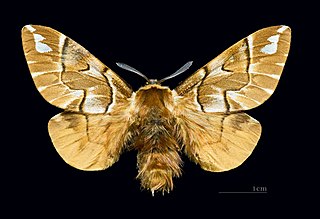
Endromidae is a family of moths. It was long considered to be a monotypic family, containing just one species, the Kentish glory, Endromis versicolora, found throughout the Palaearctic region. The family now consists of several genera and about 30 species, all former members of the family Bombycidae.

Donja Borina is a village in Serbia. It is situated in the Mali Zvornik municipality, in the Mačva District of Central Serbia. The village has a Serb ethnic majority and its population was 1,731 in 2002.
Gastridiota is a monotypic genus consisting solely of Gastridiota adoxima, a moth of the family Bombycidae. The genus was erected by Alfred Jefferis Turner in 1922 but the species had been described by him in 1902 as Andraca adoxima. It is found in the subtropical east of Australia, from the Bunya Mountains and Montville in southern Queensland to north-eastern New South Wales.

Andraca is a genus of moths of the family Endromidae.
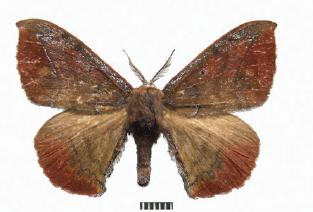
Andraca bipunctata is a moth of the family Endromidae. It is found in China (Yunnan), India, Bhutan, northern Thailand, Myanmar and Nepal. The larvae are referred to as bunch caterpillars.
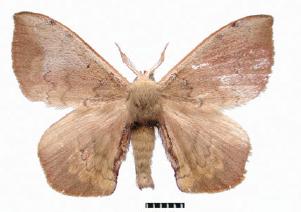
Andraca olivacea is a moth of the family Endromidae. It is found in China, Taiwan and Vietnam.

Andraca apodecta is a moth of the family Endromidae first described by Charles Swinhoe in 1907. It is found in China, Vietnam, Thailand and Indonesia.

Andraca flavamaculata is a moth of the family Endromidae. It is found in China and Vietnam.

Andraca gongshanensis is a moth of the family Endromidae. It is found in China (Yunnan).
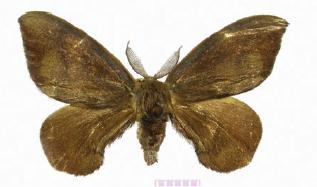
Andraca melli is a moth of the family Endromidae. It is found in China, Vietnam and Thailand.
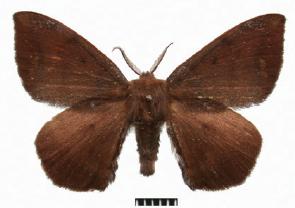
Andraca theae is a moth of the family Endromidae. It is widely distributed in Taiwan and Southern China.
Andraca trilochoides is a moth of the family Endromidae. It is found in south-east Asia, including India, Burma and Vietnam.
Andraca draco is a moth of the family Endromidae. It is found on Java.
Andraca paradisea is a moth of the family Endromidae. It is found in the Philippines (Mindanao).
Andraca chrysocollis is a moth of the family Endromidae. It is found in the Philippines (Luzon).
Andraca nobilorum is a moth of the family Endromidae. It is found in central Vietnam and south-eastern China (Guangxi).
Pierre Andraca is a French former swimmer. He competed at the 1976 Summer Olympics and the 1984 Summer Olympics.
Quantum image processing (QIMP) is primarily devoted to using quantum computing and quantum information processing to create and work with quantum images. Due to some of the astounding properties inherent to quantum computation, notably entanglement and parallelism, it is anticipated that QIP technologies will offer capabilities and performances that are, as yet, unrivaled by their traditional equivalents. These improvements could be in terms of computing speed, guaranteed security, and minimal storage requirements, etc.
Deborah "Deb" Andraca is an American politician, public relations specialist, and educator. A Democrat, she represents the 23rd district of the Wisconsin State Assembly. The 23rd assembly district comprises three northerneastern Milwaukee County suburbs—Whitefish Bay, Fox Point, and Bayside—as well as the village of Grafton and eastern portions of Mequon and the town of Grafton. She was elected to her first term in November 2020.



